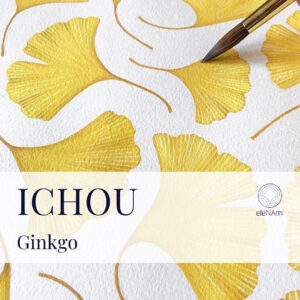In Japan, there are two types of traditional fans: the uchiwa (which we will cover here) and the sensu. The first is round and flat, while the second is foldable and shaped like a half-circle.
The uchiwa (団扇) is not just a practical tool to create a breeze during summer but also a symbol of Japanese culture. It often appears in traditional patterns, evoking the nostalgia of summer festivals and seasonal traditions.
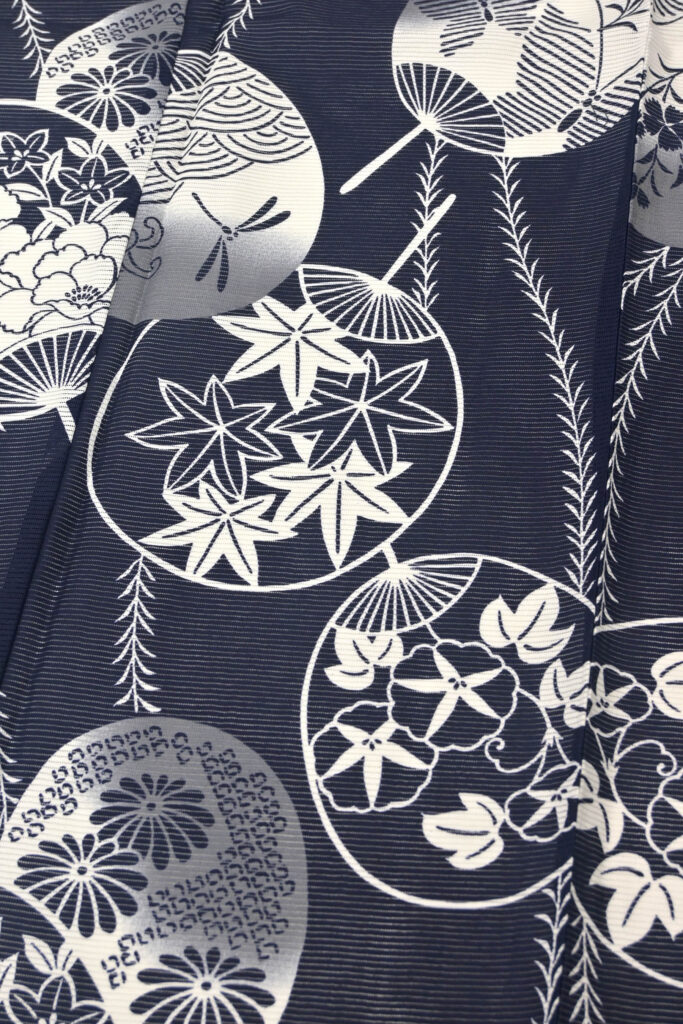
History
Uchiwa fans have a long history. Originally made from large leaves or animal hair, they later evolved to include bamboo frames and paper or fabric. Today, modern versions may use plastic and often feature advertisements, commonly handed out on city streets.
Initially, these tools were used by nobility and monks for purification, prayer, and fortune-telling. In battles, commanders used larger gunbai uchiwa to signal troops, and they appeared as family crests too. By the Edo period, these fans became popular with the general public and were used for cooling, cooking, and even catching fireflies. They also became part of summer festival dances, a tradition that continues today.
The uchiwa pattern is often featured in textiles, such as yukata (summer kimono), and in home decor. It may appear as a simple repeating motif or as part of more intricate designs combined with flowers, fireworks, or other seasonal elements.
During the Meiji period, beautifully crafted uchiwa fans became popular exports, showcasing Japanese craftsmanship to the world.
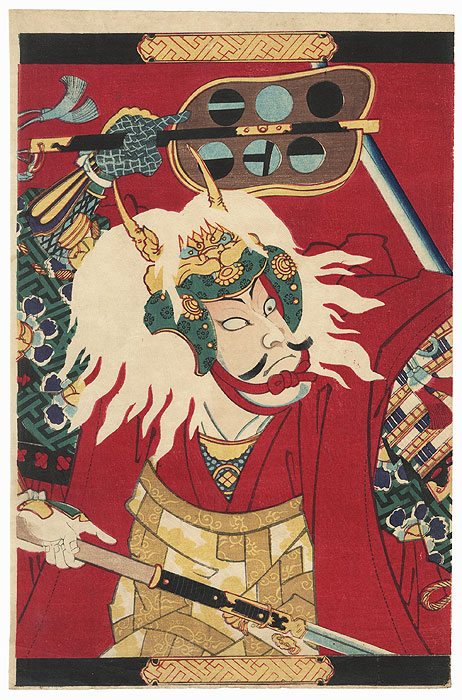
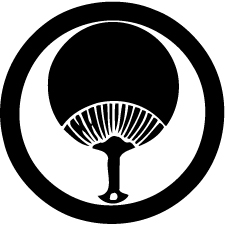
Meaning
The uchiwa motif is associated with refreshment, comfort, and celebration. Fans in Japan are seen as symbols of good fortune, prosperity, and happiness. Their shape, spreading outward from the handle, represents growth and the spread of good luck.
Displaying an uchiwa at the entrance of a house is believed to ward off evil spirits and bring happiness. Special protective fans, like the karasu uchiwa, are part of this tradition.
Modern Use
Although electric fans and air conditioning have reduced the practical need for uchiwa, they remain an iconic part of Japanese summers. They are still used as accessories at festivals, as gifts, in sumo tournaments and even as advertising tools, continuing a tradition that has lasted for centuries.
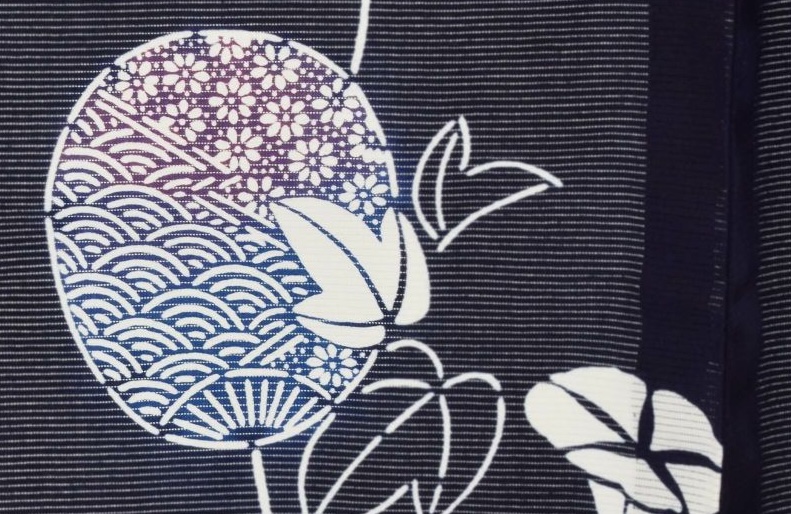
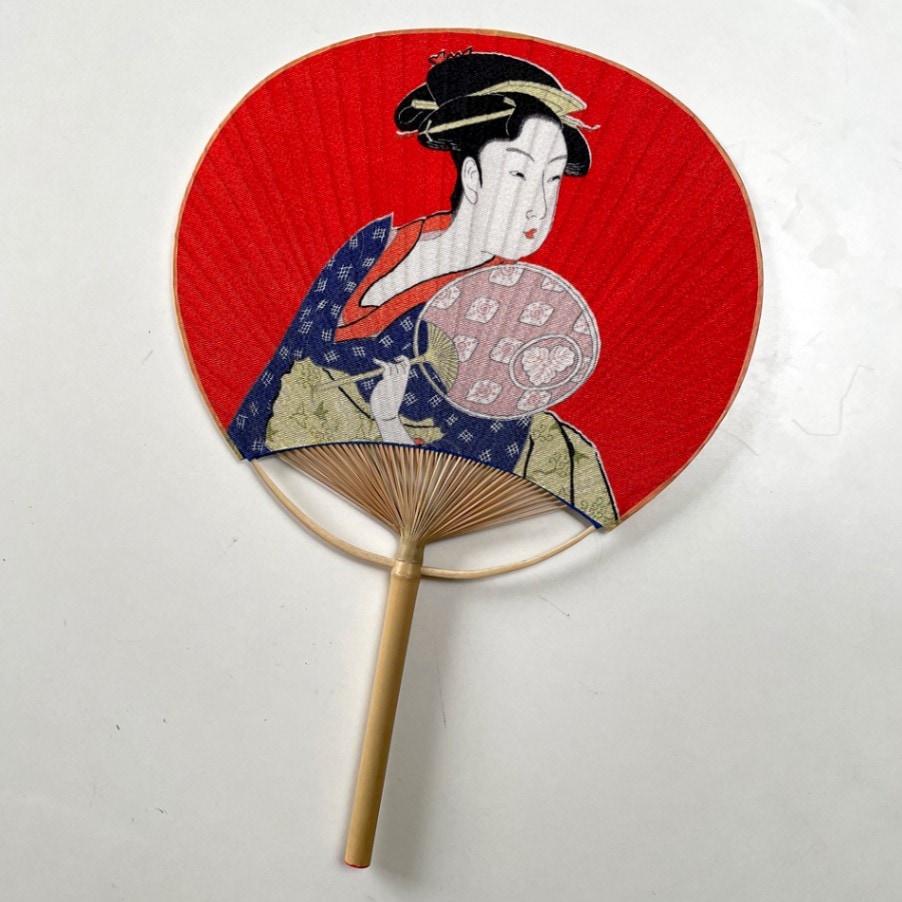
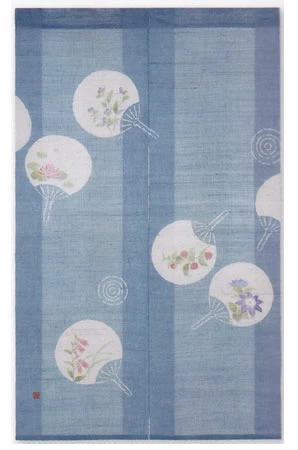
Consult the complete list of Japanese patterns HERE .



